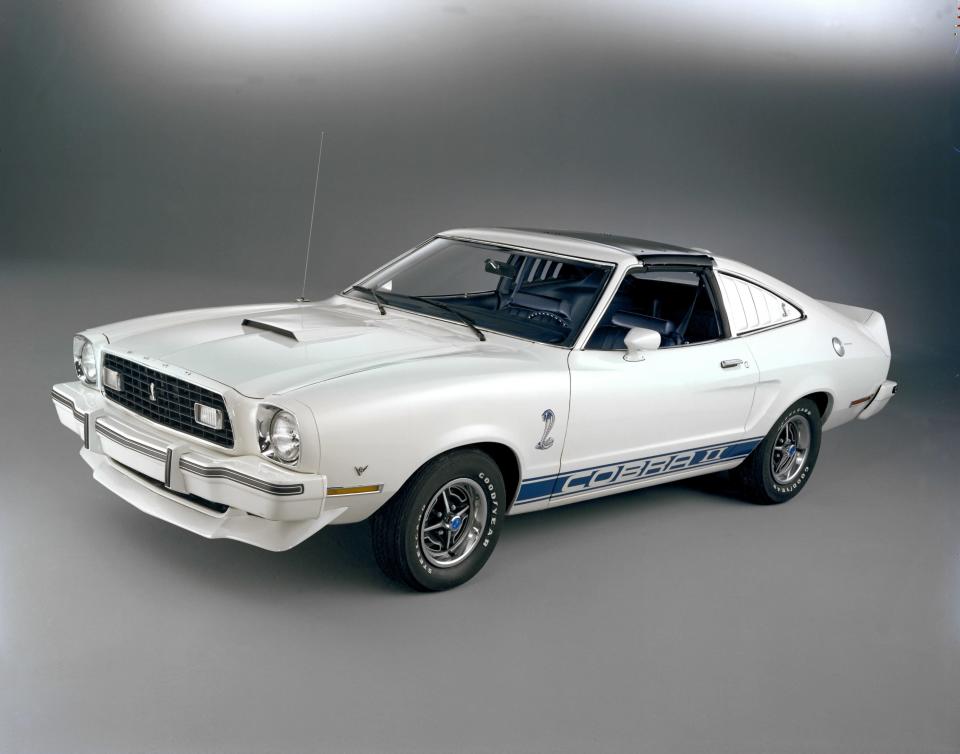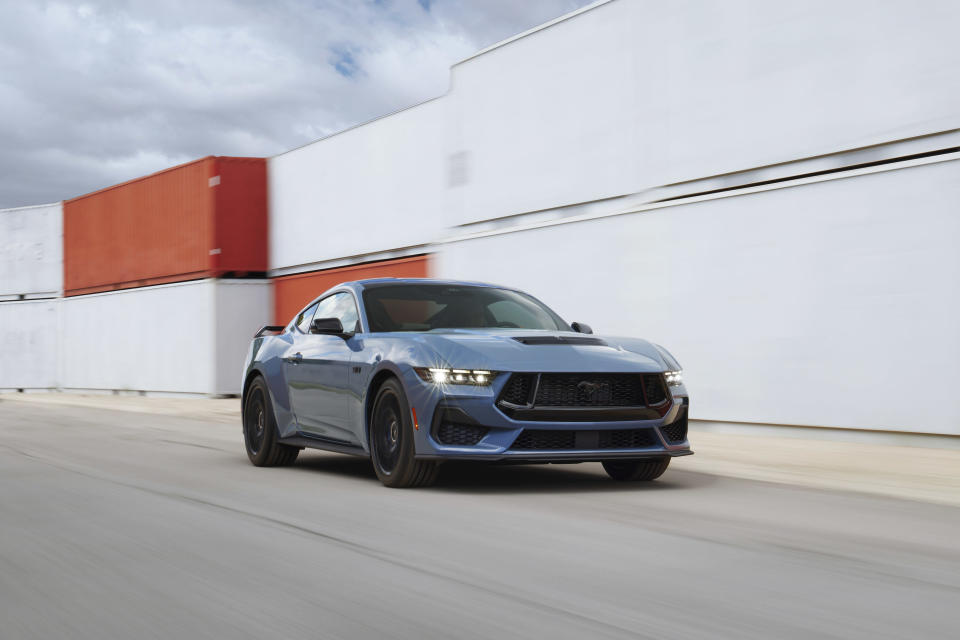If you’ve ever thought sports cars were a bit niche, the Ford Mustang has proved that doesn’t have to be the case.
In fact, more than 10 million Mustangs have been made so far during its 58-year (and counting) production run, and the muscle car remains the world’s most popular sports coupe.
With Ford recently revealing its seventh-generation Mustang at the 2022 North American International Auto Show in Detroit, we’re taking the chance to have a look back at the history of this legendary model.
1964 – The iconic original

To many, the original Mustang remains the icon of this muscle car, and it remains as cool and desirable as ever. Introduced in 1964, this striking fastback established the model’s dimensions that consist of a long bonnet, sloping roofline and the horse emblem that’s synonymous with the Mustang.
It was an enormous success for Ford, clocking up a million sales by 1966, and aided further by film appearances – including in 1964 when it starred in the James Bond film Goldfinger, and then more prominently in the 1968 Steve McQueen hit that is Bullitt. Ford has continued to play on this link, with several ‘Mustang Bullitt’ special editions following ever since.
1974 – The more efficient Mustang

The 1973 oil crisis had a major impact on Mustang sales, and in response Ford made its second-generation version a smaller and more efficient sports car that aimed to compete with other models from Europe and Japan.
The V8 engine would return a year later, however, and with the 5.0-litre displacement for which the Mustang is now known. These days, it’s one of the ‘forgotten’ Mustangs, although Ford did work to make it more muscular with ‘Cobra’ packages.
1979 – The boxy Mustang

Another of the forgotten classics, the third-generation Mustang adopted a smaller 4.2-litre V8 to begin with that made it the least powerful Mustang ever. Hardly something to brag about.
Initially sold purely as a coupe and fastback (like its predecessor), a convertible model returned in 1983, along with a more powerful ‘GT’ version as fuel prices started to fall. Production continued into 1993, making it the longest-running Mustang generation and Ford ending it with a particularly muscular-looking ‘Cobra SVT’ model. The firm was so keen on buyers using their car as intended that it would only sell them to those who held a racing licence.
1994 – A bolder take

With such a big gap between the third and fourth generations of Mustang, Ford was under pressure to make its new muscle car stand out. And it did just that, completely restyling the model and using a raft of new parts.
A 1999 redesign sharpened the look much more, while Ford made use of the Bullitt connection for a special-edition model in 2001 – which came painted in the iconic Highland Green paint.
2004 – A return to form

Ford had somewhat strayed from the look and feel of the original Mustang by now, but the fifth-generation model, which launched in 2004, was a return to form. With a design heavily influenced by the classic model, production also moved to Flat Rock, Detroit, in Michigan.
The manufacturer would play on the retro links with heritage-inspired Bullitt and GT500 models being made available, while facelifted models would follow in 2008 and 2011.
2014 – The global Mustang

Despite many around the world admiring the Mustang and importing it too, Ford didn’t sell it in many countries. But for the 2014 sixth-generation version of the muscle car, it became clear it was going to be a global model.
That meant it finally being introduced officially to Europe, while right-hand-drive models would follow in 2015 for the first time in the model’s production run. Sold in the UK with a 2.3-litre EcoBoost petrol or the mighty V8, the latter was chosen by most buyers, enabling a taste of Americana here in Britain – albeit with the sky-high running costs to go with it.
2022 – The digital Mustang

There are only so many more years that new V8 sports cars can be produced before things go electric, and this latest seventh-generation model is earmarked to be the last ’stang to not feature any kind of electrification.
Retaining that legendary V8 engine, it’s received tweaks to boost its power output, although the main changes lie in the cabin. It gets a true tech makeover, with a large digital instrument cluster sitting alongside an impressive new touchscreen. Ford is still promising a hugely enjoyable driving experience, particularly from a new track-focused Dark Horse version.
reference: uk.news.yahoo.com
